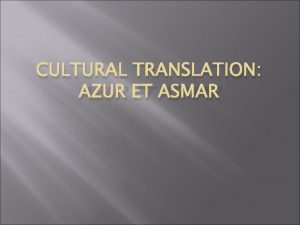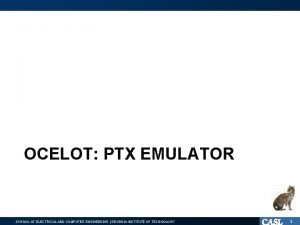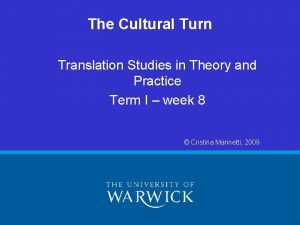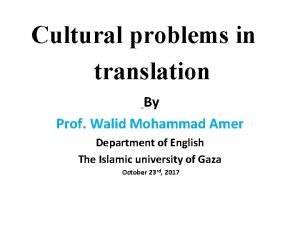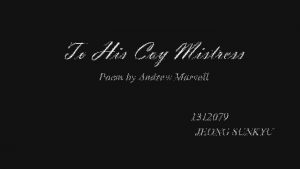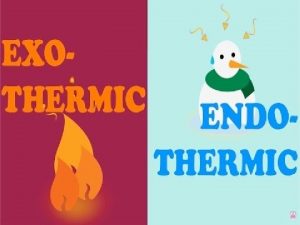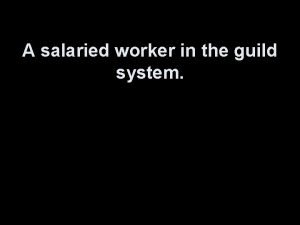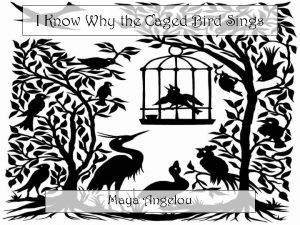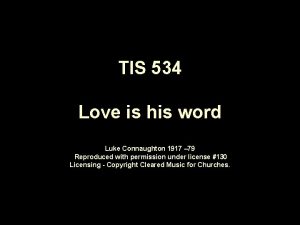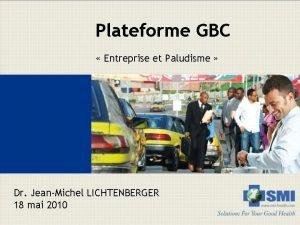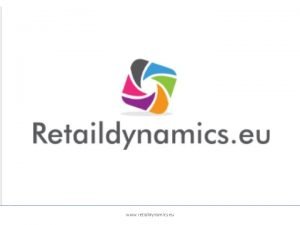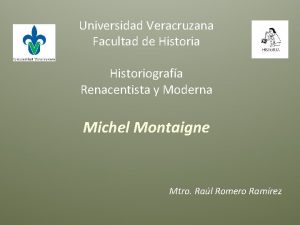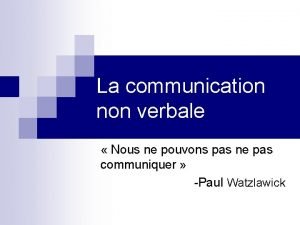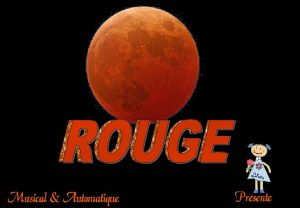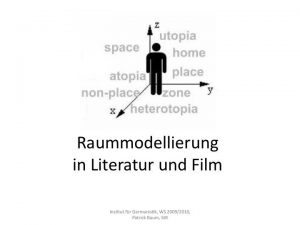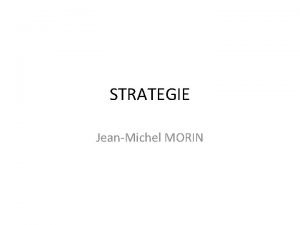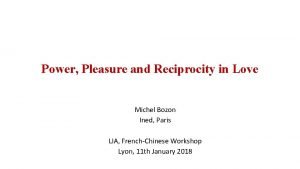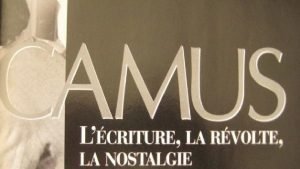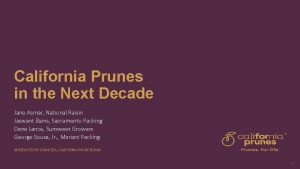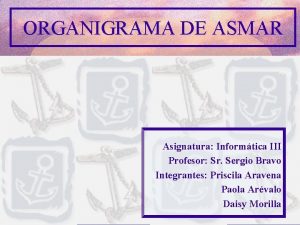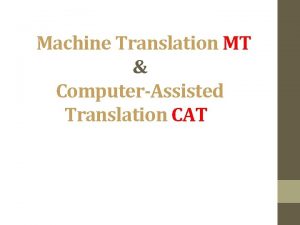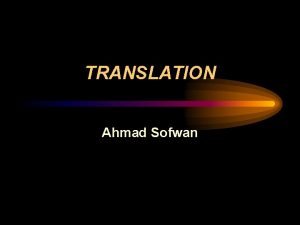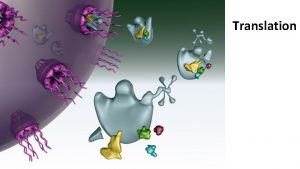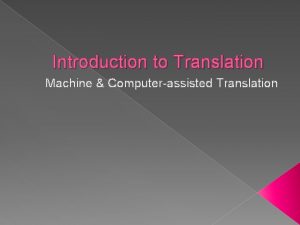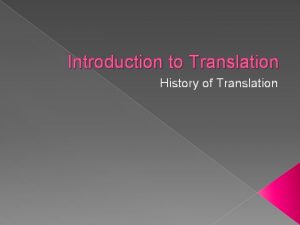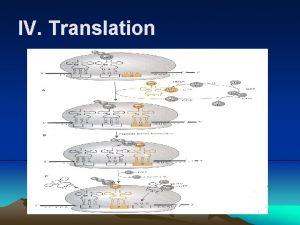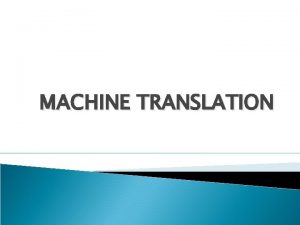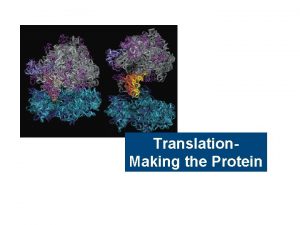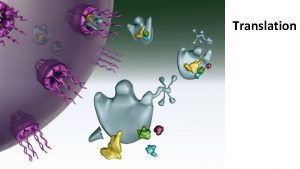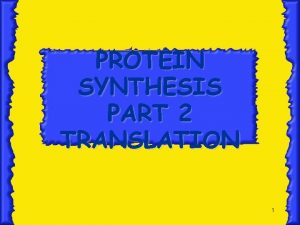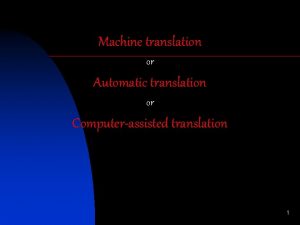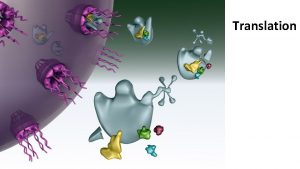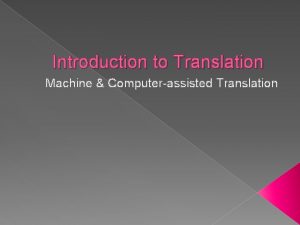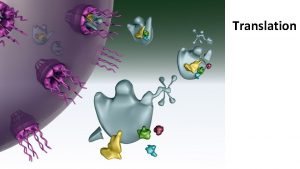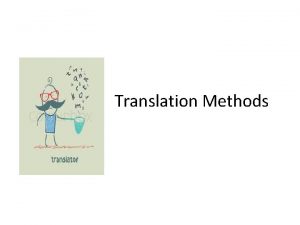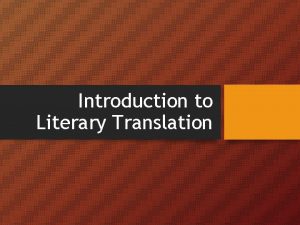CULTURAL TRANSLATION AZUR ET ASMAR Michel Ocelot His







![Immigration and the West ‘[…] such a dual-policy regime [is] viable when it comes Immigration and the West ‘[…] such a dual-policy regime [is] viable when it comes](https://slidetodoc.com/presentation_image_h/b37ca3e28aea56ce0838dc6aac55945a/image-8.jpg)






















![Reactions ‘[…] The only drawback to this movie is that part of the conversation Reactions ‘[…] The only drawback to this movie is that part of the conversation](https://slidetodoc.com/presentation_image_h/b37ca3e28aea56ce0838dc6aac55945a/image-31.jpg)




- Slides: 35

CULTURAL TRANSLATION: AZUR ET ASMAR

Michel Ocelot His fourth animated feature film His first Kirikou et la sorcière (1998) was a great success (Kirikou effect in France) Azur et Asmar also set partly in Africa Focus on “transnational cinema”

Transnational Cinema “as scores of transnational films have illustrated in various generic modes, leaving one’s homeland entails leaving behind both physically and emotionally the familiarity that home implies. This leave-taking often entails, to use Freud’s term, a becoming-unheimlich both to oneself and to those who are variously invested in the diasporic subject’s remaining recognizable. ” (Ezra & Rowden, Transnational Cinema in the Film Reader)

Transnational Cinema “… borders are always leaky and there is a considerable degree of movement across them …. It is in this migration, this border crossing, that the transnational emerges. … The experience of border crossing takes place at two broad levels. First there is the level of production and the activities of film-makers. … The second way in which cinema operates on a transnational basis is in terms of the distribution and reception of films. … when films do travel, there is no certainty that audiences will receive them in the same way in different cultural contexts” (Higson, “The Limiting Imagination of National Cinema”)

Ocelot and Transnational Cinema Focus in Africa again, which embarks on a transcendence of all types of boundaries, a perpetual translation or transportation between the two cultures, the Orient and the Occident, thus promoting a mutual complementarity contact between its viewers, mostly children in the West, and a different culture awareness of the position of the immigrant in contemporary societies

Posters and Titles

Immigration issues Hostility toward immigrants in general in the Western, developed world, and toward those of Arab origin in particular, (‘invasion’ of immigrants in the continent). Borders are of paramount importance in relation to immigrants who are excluded from a process of opening up, or even completely eliminating, all forms of boundaries when capital and the larger economy are concerned.
![Immigration and the West such a dualpolicy regime is viable when it comes Immigration and the West ‘[…] such a dual-policy regime [is] viable when it comes](https://slidetodoc.com/presentation_image_h/b37ca3e28aea56ce0838dc6aac55945a/image-8.jpg)
Immigration and the West ‘[…] such a dual-policy regime [is] viable when it comes to access to the EU: on the one hand, lifting multiple restrictions on access by non-EU firms, investment capital and goods in the context of WTO, and the general opening of financial markets in the European economies, and on the other, building a Fortress Europe when it comes to immigrants and refugees’ (Saskia Sassen, Guests and Aliens)

Developments New immigration bill adopted in France in 2006 (DNA tests, French language tests, other biometric tests) these provisions ‘[are] part of the general strategy and managerial logic based on the rationalization of processes and procedures, leading to the fundamental transformation of a conception of society once based on mutual trust into a situation of generalized suspicion’ (Merzouki, http: //www. edri. org/edrigram/number 4. 20/dnafrench-immigration-law).

Transformations in Ocelot Ocelot’s film attempts a reversal of roles. The film inhabits Arab culture, embarks on a series of boundary crossings – literal and metaphorical Finally manages a reversal of roles, turning the Self into the Other

Cultural Translation transferences between cultures – be it the physical trans-portations of individuals, spatial or temporal dis-placements, alternations between languages ‘in-between’ space that undermines contemporary fixities

Cultural Translation “By drawing on more than one culture, more than one language, more than one world experience, within the confines of the same text, postcolonial Anglophone and Francophone literature very often defies our notions of an ‘original’ work and its translation. Hence, in many ways these plurilingual texts in their own right resist and ultimately exclude the monolingual and demand of their readers to be like themselves: ‘in between’, at once capable of reading and translating, where translation becomes an integral part of the reading experience” (Samia Mehrez “Translation and the Postcolonial Experience: The Francophone North African Text”)

Cultural Translation “authors” of French origin, like Michel Ocelot, who were born and grew up in Africa, are also positioned in this space of “in between”, of not belonging, which makes them “[assume] their bilingualism as an effective means with which to contest all forms of domination, and all kinds of exclusion within their own ‘native’ cultures and their ‘host’ cultures as well” (Mehrez).

Ocelot “in-between” Born and grew up in North Africa identifies himself with the North African immigrant in France and hints at the frustration he experienced as an adolescent because of his ‘immigrant’ status when he was transported from Africa to France (“I was a small hostile Beur, with an absurd attitude. I invented a country that never existed, a country on cardboard, instead of living the here and now”).

“Beur” “Beur is the term used to refer to a person born in France of North African immigrant parents. It is not a racist term and is often used by the media, antiracist groups and second-generation North Africans themselves. The word itself originally came from the ‘verlan’ rendering of the word ‘arabe’” (Le Robert & Collins Dictionnaire Français. Anglais), where “verlan”, in the same dictionary, is “a particular kind of backsland […] [which] consists of inverting the syllables of words, and often then truncating the result to make a new word”.

“Border Subjectivity” “border filmmaking tends to be accented by the ‘strategy of translation rather than representation’ (Hicks 1991, xxiii). Such a strategy undermines the distinction between autochthonous and alien cultures in the interest of promoting their interaction and intertextuality. As a result, the best of the border films are hybridized and experimental – characterized by multifocality, multilinguality, asynchronicity, critical distance, fragmented or multiple subjectivity, and transborder amphibolic characters – characters who might best be called ‘shifters’” (Naficy “Situating Accented Cinema”).

The Film Two boys spend their first years together, since Asmar’s mother is Azur’s wet-nurse and later his nanny. This mother-figure, a literally life-giving force for Azur who has never known his real mother, brings the two boys up with oral narratives from her homeland, in particular the tale of the Djinn Fairy who awaits the brave prince to overcome all obstacles and finally deliver her from an evil spell that keeps her imprisoned. The two boys, although later separated, are at some point reunited and set off together to achieve the liberation of the Djinn Fairy.

Film Setting Dual displacement (temporal and spatial) Disorientation of this “in-between” or “beyond” state, neither here nor there, or both here and there at the same time “an exploratory, restless movement caught so well in the French rendition of the words au-delà – here and there, on all sides, fort/da, hither and thither, back and forth” (Homi Bhabha The Location of Culture).

Temporal displacement The Middle Ages, largely associated with a period of darkness for Western humanity, refer to a mediating period between the classical civilization of Antiquity and Modern times.

Spatial displacement The countries of the Maghreb, or Barbary Largely cast in the role of the enemy “The religion of its inhabitants alone was enough to exclude it from Christian Europe. The ambiguity of its position thus appears: part of the known world but irremediably alien, part of both Africa, the Mediterranean and the Islamic worlds. Hence the difficulty of deciding where to classify it, for each of these accepted divisions of the globe entailed a certain number of characteristics in the European imagination, which North Africa did not fit perfectly” (Ann Thomson Barbary and Enlightenment) Barbary: “a word which is overlaid with adverse connotations in European minds that it must immediately have provoked hostile reactions among most people”.

Discriminations & Colonisation “when an original culture is superimposed with a colonial or dominant culture through education, it produces a nervous condition of ambivalence, uncertainty, a blurring of cultural boundaries, inside and outside, a nervousness within” (Robert Young) Example: Poisoned by Saracen’s venom

Universal Discriminations Azur (sky-blue French) Curse of blue eyes Motherless Wealth-poverty Asmar (dark Arabic) Curse of dark skin Fatherless Poverty-wealth

Mother-figure Dominant position in the film Focal point in the opening sequence Breast-feeding (children’s nourishment) Children’s acquisition of speech Oral tradition “Only when we have considered the whole scope of the basic feminine functions – the giving of life, nourishment, warmth, and protection – can we understand why the Feminine occupies so central a position in human symbolism and from the very beginning bears the character of ‘greatness’” (Neumann The Great Mother).

Mother-Father Primary Open Soft Good Other Unity Orient Secondary Closed Hard Evil Self Division Occident

Travel to the Land of the Other Crossing of the sea Africa Utopia Blindness Difference

Transformations Divesting of previous identity Angel – Demon Angelic eyes – Evil eye Self – Other Native – Immigrant/Alien/Unwanted Sight – Blindness Wealth – Poverty Speech – Silence

Transformations Familiar land – Unknown territory Bright – Dull Childhood stories – Frightful reality Beauty – Ugliness Example: Meeting between Azur and Asmar


1 st merchant: “You miserable imbecile! Look what you’ve done!” Azur: “I’m sorry. ” 1 st merchant: “What do you want me to do with that? What have I done to good god to fall on such a cretin!” 2 nd merchant: “He didn’t do it on purpose. ” 1 st merchant: “Not on purpose? They have started to annoy us, these foreigners!” 2 nd merchant: “And you, you’re not a foreigner? (In Kabyle) Here, it is our home. ” 1 st merchant: “Speak Arabic, not Kabyle!”’

(No) Translation Deliberate absence of translation Gaps in understanding Sharing of alienation with main character Position of immigrant Exclusion “Translation becomes part of the process of domination, of achieving control, a violence carried out on the language, culture, and people being translated. The close links between colonization and translation begin not with acts of exchange, but of violence and appropriation, of ‘deterritorialization’” (Young). See Niranjana.
![Reactions The only drawback to this movie is that part of the conversation Reactions ‘[…] The only drawback to this movie is that part of the conversation](https://slidetodoc.com/presentation_image_h/b37ca3e28aea56ce0838dc6aac55945a/image-31.jpg)
Reactions ‘[…] The only drawback to this movie is that part of the conversation that is made in Arabic has no subtitle (fyi language used in the movie is French and Arabic but it has English subtitle). ’ http: //mettysays. blogspot. com/search? updatedmin=2007 -0101 T 00%3 A 00%2 B 07%3 A 00&updatedmax=2008 -0101 T 00%3 A 00%2 B 07%3 A 00&maxresults=34 ; ‘The story was presented in French and Arabic and I found it a shame that they didn’t give subtitle for the Arabic dialogue’ http: //whiteka. blogspot. com/2007_09_01_archive. h tml).

Power of Hybridity/Liminality Knowledge Inside/Outside Mediation No boundaries Power of the disempowered Example: Jénane / Princess Chamsous-Sabah

Space of Victory Myth Utopia (all characters displaced/misfits) End of Film

Translation/Appropriation “the Other text is forever the exegetical horizon of difference, never the active agent of articulation. The Other is cited, quoted, framed, illuminated, encased in the short/reverseshot strategy of a serial enlightenment. Narrative and the cultural politics of difference become the closed circle of interpretation. The Other loses its power to signify, to negate, to initiate its historic desire, to establish its own institutional and oppositional discourse. However impeccably the content of an ‘other’ culture may be known, however anti -ehtnocentrically it is represented, it is its location as the closure of grand theories, the demand that, in analytic terms, it be always the good object of knowledge, the docile body of difference, that reproduces a relation of domination and is the most serious indictment of the institutional powers of critical theory” (Bhabha)

False dilemma “If we must translate in order to emancipate and preserve cultural parts and to build linguistic bridges for present understandings and future thought, we must do so while attempting to respond ethically to each language’s contexts, intertexts, and intrinsic alterity. This dual responsibility may well describe an ethics of translation or, more modestly, the ethical at work in translation. […] Indeed, without more refined and sensitive cultural/linguistic translations and, above all, without an education that draws attention to the very act of translation and to the interwoven, problematic otherness that it confronts, our global world will be less hospitable; in fact, it could founder” (Bermann, Nation, Language and the Ethics of Translation)
 Azur et asmar
Azur et asmar Michel ocelot azur et asmar
Michel ocelot azur et asmar Ocelot ide
Ocelot ide Gpu ocelot
Gpu ocelot Jerusalem cite de dieu chant
Jerusalem cite de dieu chant Transformations of functions
Transformations of functions Noun phrases
Noun phrases Semantic model of translation
Semantic model of translation Voice translation-rule
Voice translation-rule Cultural turn in translation
Cultural turn in translation Cultural problems in translation
Cultural problems in translation Gold is for the mistress poem
Gold is for the mistress poem Barry lights his candles to get his hot air balloon to fly
Barry lights his candles to get his hot air balloon to fly Macbeth act 1 scene 1 analysis
Macbeth act 1 scene 1 analysis A salaried worker in a guild
A salaried worker in a guild Mixed tenses test
Mixed tenses test His shadow shouts on a nightmare scream
His shadow shouts on a nightmare scream Remains by simon armitage analysis
Remains by simon armitage analysis Mi nombre la casa en mango street
Mi nombre la casa en mango street Love is his way
Love is his way Martin fell off his skateboard
Martin fell off his skateboard A vassal owed his first loyalty to his
A vassal owed his first loyalty to his Michel et augustin présentation
Michel et augustin présentation Jean michel lichtenberger
Jean michel lichtenberger Mont saint michel merveille du monde
Mont saint michel merveille du monde Michel mazzalongo
Michel mazzalongo Michel mossel
Michel mossel Michel kregel
Michel kregel Biografia michel de montaigne
Biografia michel de montaigne Michel folco
Michel folco Michel sardou 1985
Michel sardou 1985 Biografie gliederung
Biografie gliederung Michel morin acteur
Michel morin acteur Michel vandenheede
Michel vandenheede Michel bozon
Michel bozon Michel gallimard
Michel gallimard
